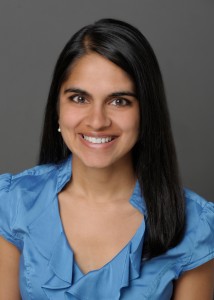WORKLOAD, NOT HOURS, CONTRIBUTE TO RESIDENT FATIGUE
Generation R: The Rushed Resident
As a medical student, I recall senior physicians commenting how current residents have it easy because of strict, 80-hour workweek limitations. These senior doctors reminisced about their training and described stretches of 2-3 days when they did not leave the hospital. As I started residency, I thought to myself, “This can’t be so bad,” compared to working 72 hours consecutively.
In an attempt to ease my anxieties I convinced myself that while residency would be challenging, it would be manageable because we had laws to limit the amount we worked.
Then reality set in – residency was far from easy. At first, I figured there were growing pains and once I became more efficient and confident, this “paradise residency,” senior doctors described would magically appear.
Now as a 3rd year resident I have come to realize that this paradise does not exist.
My generation of trainees is challenged with cramming an increasing amount of work into a shorter amount of time. From 1990 to 2010, annual admissions to major teaching hospitals increased by almost 50%. In the same time period, residency positions grew by only 13%[1]. While physician extenders such as nurse practitioners and physician assistants have mitigated some of this increase – there is no doubt that overall workloads have increased.
As our nation collectively focuses on decreasing healthcare costs, length-of-stay is decreasing, leading to an increased turnover of patients in the hospital – many of whom have complex medical histories, complex co-morbid conditions and higher levels of acuity than even a decade ago.
Further, each of these admissions and discharges carries an exponential increase in the amount of resident-generated paperwork, much of which does not improve care but results from compliance with ever-changing insurance and medical-legal concerns.
This translates to increased volume of resident duties with less time to do it all. To cope with these realities, residents have evolved to become more efficient and to multitask. This inevitably sacrifices certain areas of medical care and training, by detracting from time that could be spent with patients or in didactics[2].
The issue of resident fatigue and burnout is not a simple one. Decreasing the amount of time spent in the hospital, with the aim to reduce medical error and resident fatigue, is a good start. However this is an insufficient intervention to tackle the complex problem at hand. Studies regarding the benefits of reduced resident work hours are inconclusive[3],[4]. On the other hand, studies that reduce resident workload have been associated with improved resident satisfaction, increased duty hour compliance and increased participation in educational activities[5],[6].
As the medical field begins to take more seriously the issues of resident burnout and fatigue, one thing is clear: it is the workload, not the work hours which needs to be addressed.
Dr. Gopi Desai, MD is a third-year pediatric resident at Weill-Cornell Medical Center and NY Presbyterian Queens and a member of the New York State (District II), Chapter 2 (Long Island) Resident Committee of the American Academy of Pediatrics.
[1]Goitein L, Ludmerer KM. Resident workload-let’s treat the disease, not just the symptom. JAMA Intern Med. 2013 Apr 22;173(8):655-6.
[2] Block L1, Habicht R, Wu AW, Desai SV, Wang K, Silva KN, Niessen T, Oliver N, Feldman L. In the wake of the 2003 and 2011 duty hours regulations, how do internal medicine interns spend their time? J Gen Intern Med. 2013 Aug;28(8):1042-7.
[3] Choma NN, Vasilevskis EE, Sponsler KC, Hathaway J, Kripalani S. Effect of the ACGME 16-hour rule on efficiency and quality of care: duty hours 2.0. JAMA Intern Med. 2013 May 13;173(9):819-21
[4] Sen S, Kranzler HR, Didwania AK, Schwartz AC, Amarnath S, Kolars JC, Dalack GW, Nichols B, Guille C. Effects of the 2011 duty hour reforms on interns and their patients: a prospective longitudinal cohort study. JAMA Intern Med. 2013 Apr 22;173(8):657-62
[5] McMahon GT, Katz JT, Thorndike ME, Levy BD, Loscalzo J. Evaluation of a redesign initiative in an internal-medicine residency. N Engl J Med. 2010; 362(14):1304-1311.
[6] Thanarajasingam U, McDonald FS, Halvorsen AJ, et al. Service census caps and unit-based admissions: resident workload, conference attendance, duty hour compliance, and patient safety. Mayo Clin Proc. 2012;87(4):320-327.

